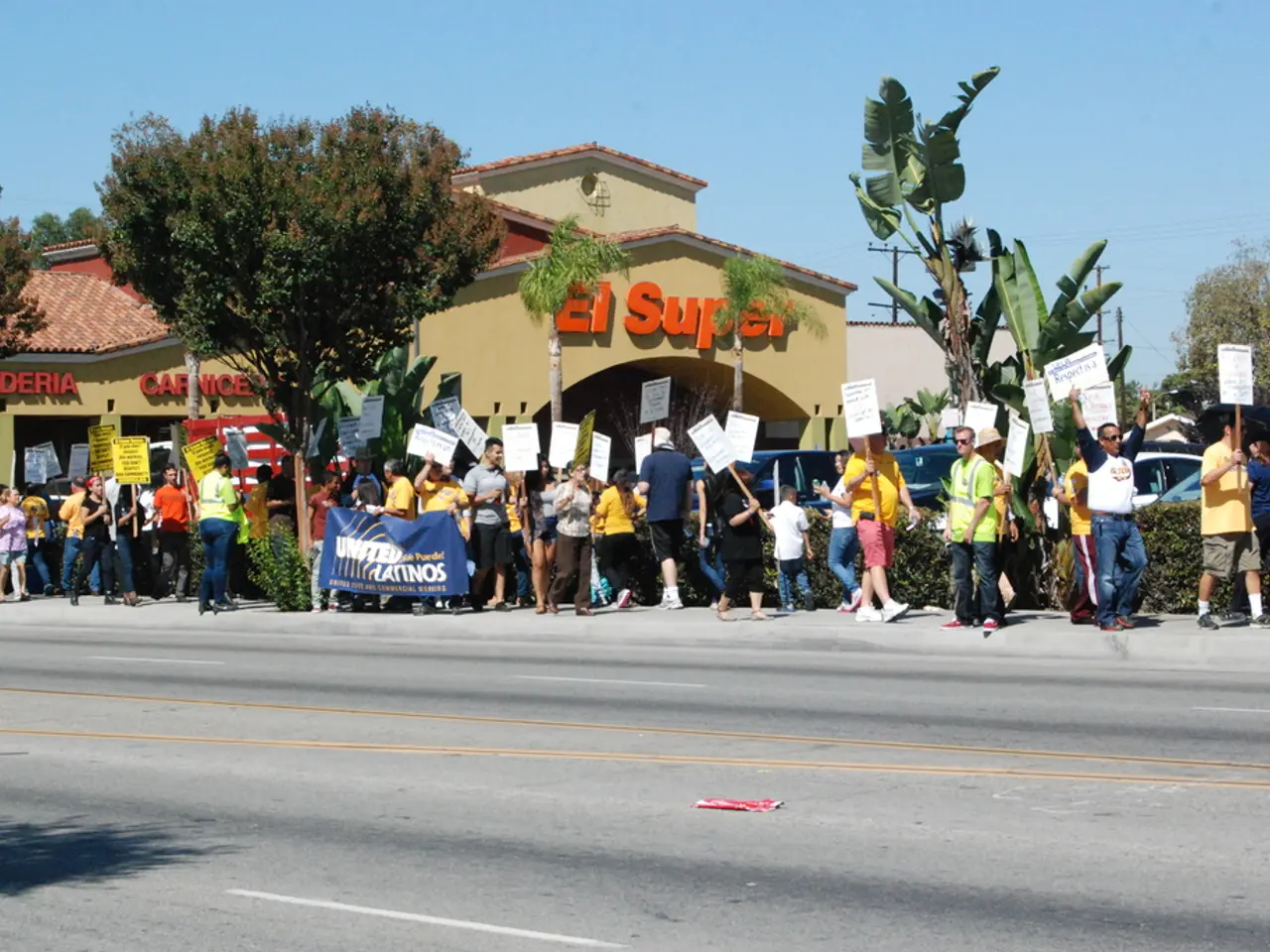Guide on Manipulating Elections and Moulding Public Opinion
In the dynamic world of politics, crafting an effective strategy to influence voter behavior is crucial for successful campaigns. Here are some key elements that can help shape a winning campaign.
**Understanding Voter Behavior**
Understanding the factors that influence voter behavior is the first step towards a successful campaign. Long-term factors such as social-group identity and partisan identification, as well as short-term factors like campaign events and candidate appeals, play a significant role in shaping voter decisions [5]. Modern voters are more independent and informed, making them more responsive to short-term campaign dynamics [5].
**Crafting Compelling Narratives**
Utilising social media platforms to create engaging narratives that resonate emotionally with voters is a powerful tool. This includes personal anecdotes, interactive content, and real-time adaptations to changing political discourse [2]. Focusing on storytelling that fosters deeper connections with the electorate, transforming them from passive to active participants, is essential [2].
**Voter Engagement and Participation**
Encouraging voter engagement through interactive content such as polls, Q&A sessions, and live discussions helps build a loyal supporter base by fostering trust through two-way communication [2]. Leveraging electoral analytics to tailor messages to specific audience segments increases engagement and voter turnout [2].
**Addressing Voter Efficacy and Trust**
Rebuilding political efficacy and demonstrating the impact of voting between election cycles is key to addressing voter disillusionment [3]. Offering compelling narratives of change and progress, rather than relying solely on advertising, helps address disillusionment [3].
**Adaptability and Evolution**
Staying updated with the latest campaign strategies and technologies is essential in today's dynamic political landscape. Traditional methods may not be as effective, so it's important to analyse broader societal, economic, and political contexts to tailor messages effectively [1][3][4].
**The Ground Game and Digital Outreach**
The key components of a political ground game include door-to-door canvassing, phone banking, local volunteers, and organising events to engage voters at the grassroots level. Email and SMS campaigns provide direct, measurable, and often high-converting communication channels to inform, persuade, and mobilize voters [1]. Social media allows real-time engagement, message amplification, voter persuasion, and direct communication with supporters [2].
**Micro-targeting and Multilingual Campaigning**
Micro-targeting involves using data to deliver personalized messages to specific voter segments based on demographics, interests, and behaviour. Multilingual campaigning is becoming more important to connect authentically with diverse communities and ensure inclusivity in voter outreach [6].
**Building a Loyal Voter Base**
To build a loyal voter base, a campaign should engage consistently, align on values, communicate transparently, and involve grassroots efforts. A candidate's unique value proposition can be defined by identifying what sets them apart in terms of experience, vision, and values [7].
**Handling Negative Attacks**
To handle negative attacks, a campaign should have rapid response teams, fact-checking, counter-narratives, and stay focused on core messaging and values [8].
For more information or to get involved, please visit our website or contact us at +91 9848321284.
Sources: [1] Email and SMS campaigns provide direct, measurable, and often high-converting communication channels to inform, persuade, and mobilize voters. [2] Social media allows real-time engagement, message amplification, voter persuasion, and direct communication with supporters. Influencers can help candidates reach niche audiences, especially younger voters, with higher engagement and trust levels. Utilize social media platforms to create engaging narratives that resonate emotionally with voters. Use interactive content to encourage voter engagement. Leverage electoral analytics to tailor messages to specific audience segments. [3] Common mistakes to avoid in political campaigns include ignoring data, inconsistent messaging, underestimating digital channels, poor team coordination, and lack of crisis planning. Rebuilding trust, investing in grassroots efforts between election cycles, and addressing disillusionment by offering compelling narratives of change and progress are important strategies. Stay updated with the latest campaign strategies and technologies. Analyse broader societal, economic, and political contexts to tailor messages effectively. [4] An effective political advertisement should have a clear message, emotional appeal, strong visuals, a compelling call-to-action, and platform-specific optimization. [5] Understanding voter behavior is important to tailor messages, platforms, and strategies that resonate with the target audience. Voter behavior is influenced by long-term factors like social-group identity and partisan identification, as well as short-term factors such as campaign events and candidate appeals. [6] Multilingual campaigning is becoming more important to connect authentically with diverse communities and ensure inclusivity in voter outreach. [7] To build a loyal voter base, a campaign should engage consistently, align on values, communicate transparently, and involve grassroots efforts. A candidate's unique value proposition can be defined by identifying what sets them apart in terms of experience, vision, and values. [8] To handle negative attacks, a campaign should have rapid response teams, fact-checking, counter-narratives, and stay focused on core messaging and values.
- Data analytics plays a significant role in shaping voter decisions by understanding long-term factors such as social-group identity and partisan identification, as well as short-term factors like campaign events and candidate appeals.
- Social media, along with email and SMS campaigns, allows for direct and measurable communication, enabling real-time engagement, message amplification, voter persuasion, and the creation of compelling narratives that resonate with diverse communities.
- Consulting services in politics can help address voter disillusionment by rebuilding political efficacy, investing in grassroots efforts, and offering compelling narratives of change and progress between election cycles.
- Branding strategies are essential for political campaigns, as the unique value proposition of a candidate, based on their experience, vision, and values, can help build a loyal voter base through consistent engagement, alignment on values, transparent communication, and grassroots efforts.








